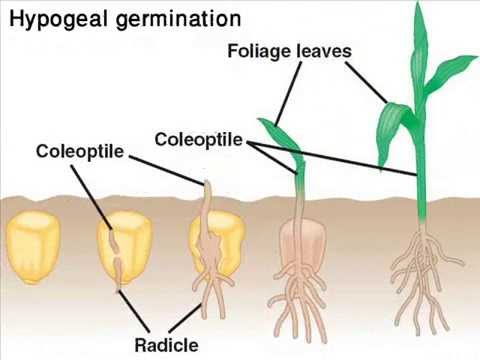The seed is the mature ovule developed after fertilization. It contains the embryo. Hence, the seed consists of two parts – embryo and a seed coat.
The integuments of the ovule develop into the seed coat. In dicots, the seed coat is double layered, while in monocot seeds, it is fused with the fruit wall.
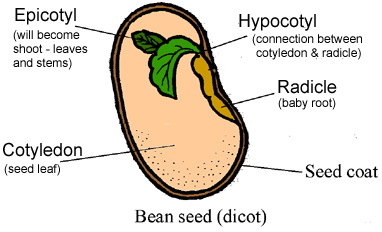
The embryo consists of an embryonal axis and one or two cotyledons. The basal part of the axis is called the radicle, and the upper part is called the plumule. The part of the axis just above the attachment of cotyledons is called epicotyl, and the part below it is called hypocotyl.
A seed with endosperm is called endospermous (albuminous seeds) and seeds without endosperms is known as non–endospermous (exalbuminous seed).
Structure of Dicot Seed
- The dicot seed consists of a double – layered seed coat. The outer layer is called testa, and the inner layer is called tegmen.
- At one edge of the seed, there is a whitish elongated ridge called the raphe.
- At the base, there is a scar on the seed coat, called the hilum, through which the developing seed attaches to the fruit.
- Above the hilum, there is a minute pore called micropyle.
- The embryo is found within the seed coat.
- The embryo consists of an embryonal axis, and two cotyledons.
- The cotyledons contain reserve food materials.
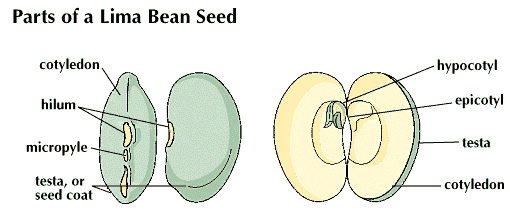
- The tip of the axis is called plumule, and the basal part is called radicle.
- Plumule produces the shoot system, and radicle grows into the root system.
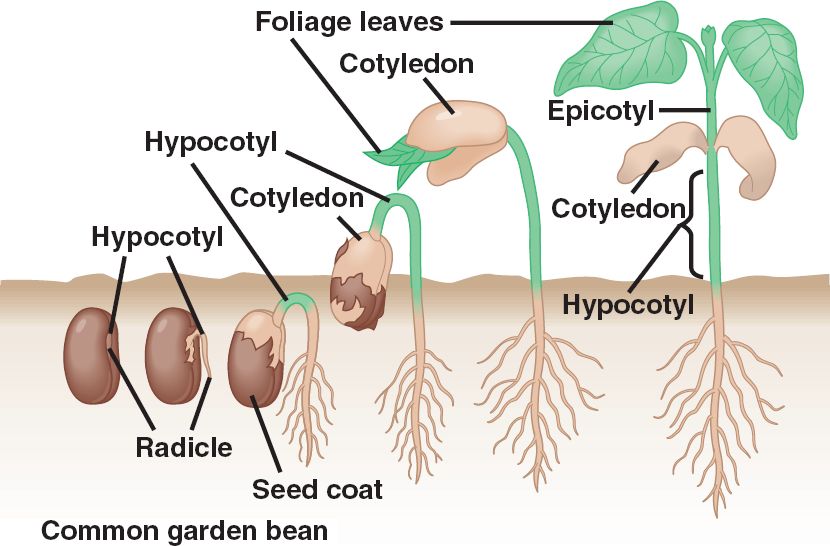
Structure of Monocot Seeds
- Most monocots are endospermic, but some (such as orchids) are non-endospermic.
- The seed coat is usually membraneous and fused with the fruit wall.
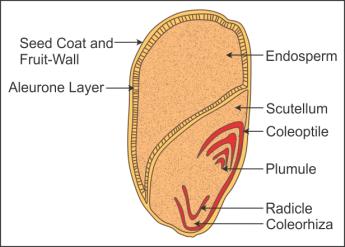
- The endosperm is bulky, and forms the major portion of the grain. The endosperm is covered by a proteinaceous layer called aleurone layer.
- The embryo is very small and lies towards the base of the grain.
- Embryo consists of a single large shield shaped cotyledon called the scutellum, and a short axis with a plumule and a radicle.
- The plumule is protected by a sheath called coleoptiles, and the radicle is protected by a sheath called coleorhizae.
